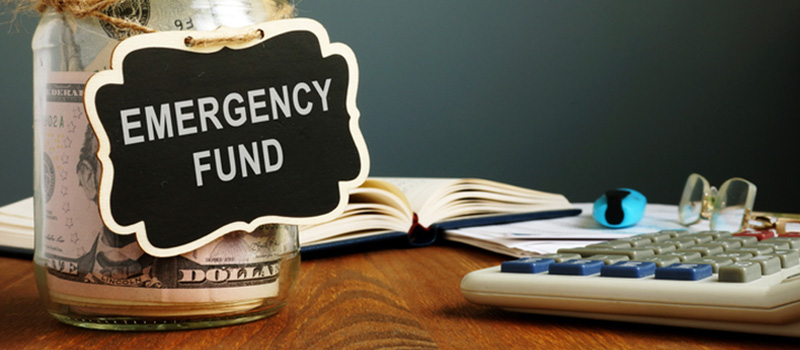How To Set up an Emergency Fund (And Why It's Important)
How To Set up an Emergency Fund (And Why It's Important)

How To Set up an Emergency Fund (And Why It's Important)
According to the Federal Reserve, 36% of Americans don’t have enough held back to cover an unexpected expense—and some years, this number has been as high as 50%. For those that live paycheck to paycheck, it can be difficult to just cover household bills. Consider how an emergency fund can be essential to have on hand and how to get one started.
Why is an Emergency Fund Important?
An emergency fund isn’t just about reducing stress in the case of a surprise incident—it can help you avoid the vicious (and costly) cycle of debt.
Scrounging up an emergency fund for your household can mean the difference between taking out a costly loan or getting a cash discount for paying off a surprise bill. For example, if a medical or dental emergency occurs, you can often get a discount if you pay off your bill in one payment. On the other hand, if you can’t afford surprise expenses, the average interest rate of your credit card is over 18%.
An emergency fund can help give you the padding you need to help avoid surprise expenses. Keep reading to find out how you can get this set up.
How To Set up an Emergency Fund
- Create smaller savings goals
- Make regular contributions
- Use a separate account
- Look for ways to reduce spending
- Stop when you reach your goal
The steps are straightforward. When it comes to your emergency fund, you need to start small. While $10 or $20 might not seem like a lot, it can add up quickly if you are committed to regular payments and can avoid making withdrawals from that account.
Keeping your contributions in a separate account can help keep your money “out of sight, out of mind.”
It can be tough to cut costs if you’re already trying to be frugal. Look for expenses you can adjust to help you find wiggle room in your current budget. See if you can cut out a streaming platform, look through your accounts to make sure you don’t have any unknown recurring subscription costs, shop for on-sale grocery items, avoid eating out frequently, and avoid scenarios that tempt you to spend unnecessarily.
Finally, set a goal for your emergency fund ($500 is a great starting point) and stop contributing when you reach that goal. Once you hit your goal, use that extra amount towards one bill until it is paid off. Again, an extra $10 or $20 doesn’t seem like a lot, but it will chip away at your bill when you add it to every minimum payment. You can aim for your smallest, high-interest bill. This will help you protect your emergency fund by having more wiggle room in your week-to-week expenses.
Content on this page is designed for general information and/or entertainment purposes. It is not intended to provide legal or any other type of advice and is not meant to be a thorough discussion of every issue that a person should consider or may encounter. Unless expressly referenced, we are not affiliated with any company or app that may be referenced herein and we do not endorse them. We are not responsible or liable for the user's reliance on this content or for the availability of links to other websites or resources, or for advertising, products, services or other materials on or available through these websites or resources. Any reference to third party rates or products is for identification only and is subject to change without notice.
